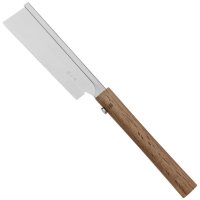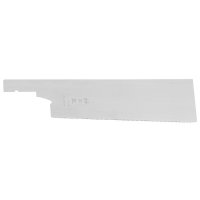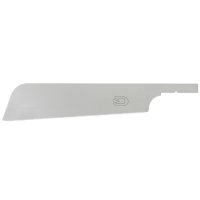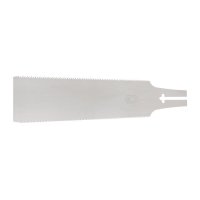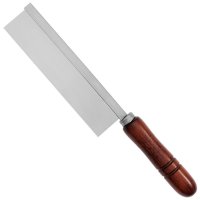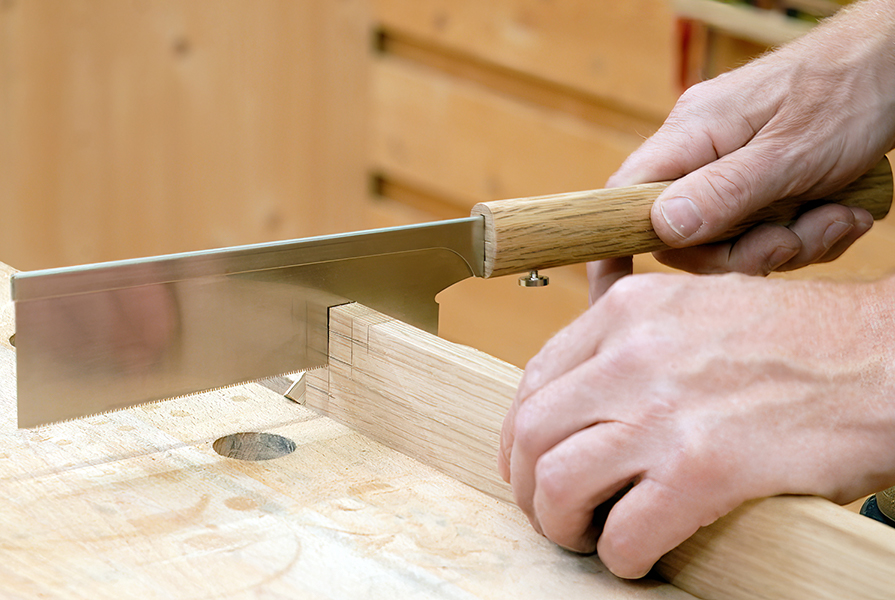
The Dozuki Kami No Utsuwa is currently the finest Japanese saw in the DICTUM range. Its cuts are extremely fine, the cut surfaces are smooth and shiny, and the cut edges are almost tear-free. What can this precision saw do? For which tasks is this Dozuki saw suitable?
Technical data for the Kami No Utsuwa
The Kami No Utsuwa is a total of 400 mm long, its handle made of Japanese white oak is untreated. The 180 mm long blade is only 0.15 mm thick, making it one of the thinnest Japanese saw blades. Its universal tooth pattern has a pitch of only 1 mm (equivalent to 25 tpi) and is set to a cutting width of 0.25 mm. The specified cutting depth, or the height of the blade from the tooth tips to the back, is 40 mm.
Can I use the full cutting height of the Kami No Utsuwa?
Due to its universal teeth, the saw cuts both along and across the grain direction. The cut is very fine and precise. The cut surfaces are very smooth, especially with cuts across the grain. Even on the exit side, the saw cut shows virtually no tear-out. The cutting depth of 40 mm and the universal tooth pattern suggest that this saw is suitable for dovetailing up to a depth of 40 mm. However, the cutting performance decreases as the wood cross-section increases, which can result in drifting.
The reason for this is quickly explained: Each saw tooth, as it travels through the wood, removes one or more chips, which are transported out of the saw cut into the tooth space or gap. With such a fine tooth pitch, as found in the Kami No Utsuwa, the space between the teeth is accordingly small and quickly fills up. If the gap is already full halfway through the wood, the saw tooth can no longer cut effectively. Furthermore, the chips are no longer transported away cleanly, which leads to the saw cut running off as the cutting depth increases. This becomes more significant when making cuts along the grain of the wood since longer chips are produced in this case compared to cross-grain cuts.
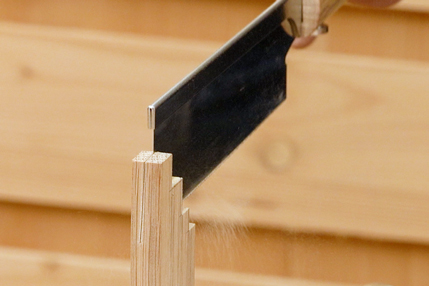
Tests showed that in thicker material, the deep saw cuts tend to drift with the Kami No Utsuwa
Which Japanese saws are suitable for fine saw cuts?
When opting for a Japanese saw for precise cuts, you should pay attention to both the specified cutting depth and the tooth pitch. In saws with ultra-fine blades like the Kami No Utsuwa, the cross-section (cutting depth and material thickness combined) that can be cut cleanly is smaller than in a Japanese saw with a coarser tooth pitch. We therefore recommend using a Japanese saw with an appropriately toothed saw blade for different tasks.
The Kami No Utsuwa is our recommendation for very fine work, such as precise rip cuts for dovetails in material up to 15 mm thick, fine shoulder cuts up to 50 mm wide, and a maximum depth of 10 mm. It is ideal for the finest joinery work in restoration, the perfect Japanese saw for overlay work in Kumiko, and for dovetailing in thin materials.
For crosscuts typical in furniture making, we recommend the Dozuki Universal 240 as a versatile dovetail saw. With its reinforced back and fine universal blade, it is versatile and especially suitable for rip cuts up to approximately 30 mm thick and shoulder cuts up to 70 mm wide. For mortise and tenon joints, the Ryoba Komane 240 is our first choice. With its double-sided toothed blade without back reinforcement, it can be used up to any depth for both rip and crosscuts.
Is an ultra-thin saw blade only for professionals?
The Kami No Utsuwa is a typical representative of the Dozuki saws and, like all Japanese saws, cuts on the pull stroke. Its ultra-fine saw blade requires the user to have some experience in handling Japanese saws and the corresponding sawing technique. Unnecessary pressure from above and tilting to the side can quickly cause the ultra-thin blade to bend. However, this should not stop you from working with the Kami No Utsuwa. If something goes wrong and the blade is damaged, you can easily replace it with a suitable replacement blade.

The saw blade of the Kami No Utsuwa is as thin as a sheet of paper

